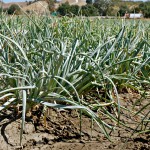First shipments of Peruvian Sweets arrived from South America in late August and early September, and Dan Borer of Keystone Fruit Marketing Inc. in Walla Walla, WA, told OnionBusiness.com that “so far, the crop is coming in with good quality.”
Dan added that Keystone customers eagerly await the new crop out of Peru, and “generally demand outweighs supplies for the first six weeks of the season.” He noted the sweet onions from Peru take slightly longer to arrive on the West Coast versus the East Coast, but Dan said shipments are ramping up.
Many receivers and consumers know the onions as Mayan Sweets, and Dan provided background on the subject.
In the early 1990s, he said, Keystone pioneered Southern sweet onions with growers in Nicaragua and other Central American growing areas, marketing them as Mayan Sweets. As time went on, it was determined that Peru had better growing conditions, and greater focus was placed on building relationships with growers in that country. The name Mayan Sweets stuck, however, and these days Peruvian Sweets and Mayan Sweets are interchangeable.
During the early days of the deal as the Peruvian Sweet market gained traction in the United States, Keystone marketed nearly 90 percent of the onions, but eventually more and more marketers became interested in selling the Peruvian product. Today Keystone markets about 1,000 of the 4,000 containers imported into this country annually, holding a strong 25 percent market share.
Borer said, “We are definitely a leader in this industry. There are about four or five major players in the Peruvian deal now, with some small marketers involved as well.”
In terms of the sweets’ popularity, Dan said that Peruvians are the mainstay for the sweet onion category for about five months here in the United States. Obviously the popularity has expanded in recent years, he said.
According to the National Onion Association, “U.S. onion imports total 12-17 million 50 pound bags annually. Leading countries importing into the U.S. are Mexico, Canada, Peru, and Chile.”
This country is the largest receiver of Peruvian sweet yellows, taking more than three-quarters of the production. Southern Hemisphere nations come in at a distant second and third.


